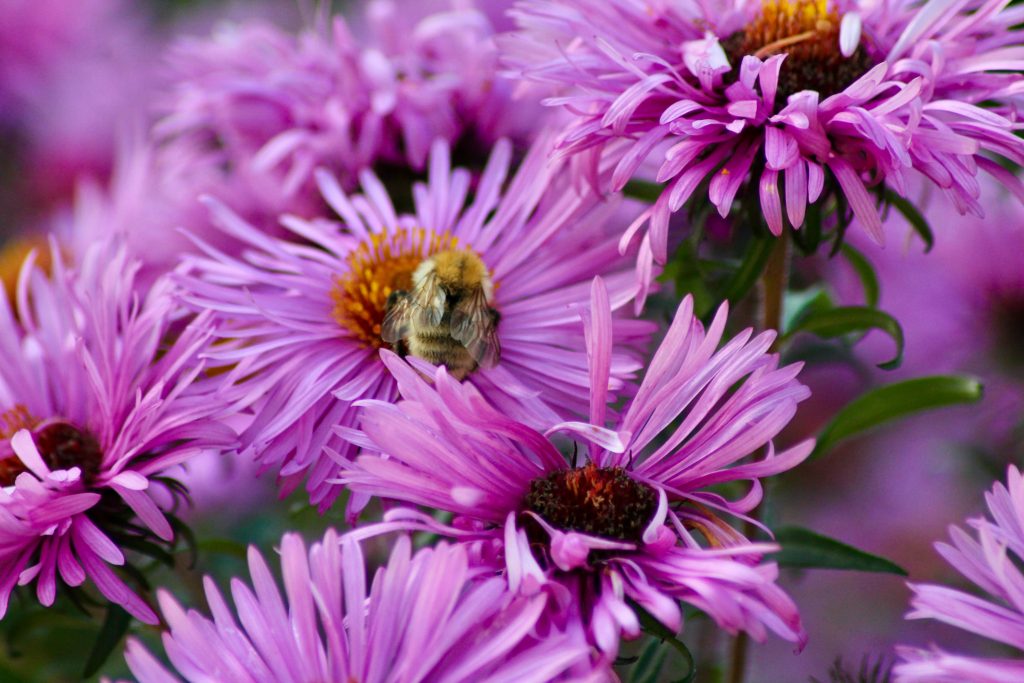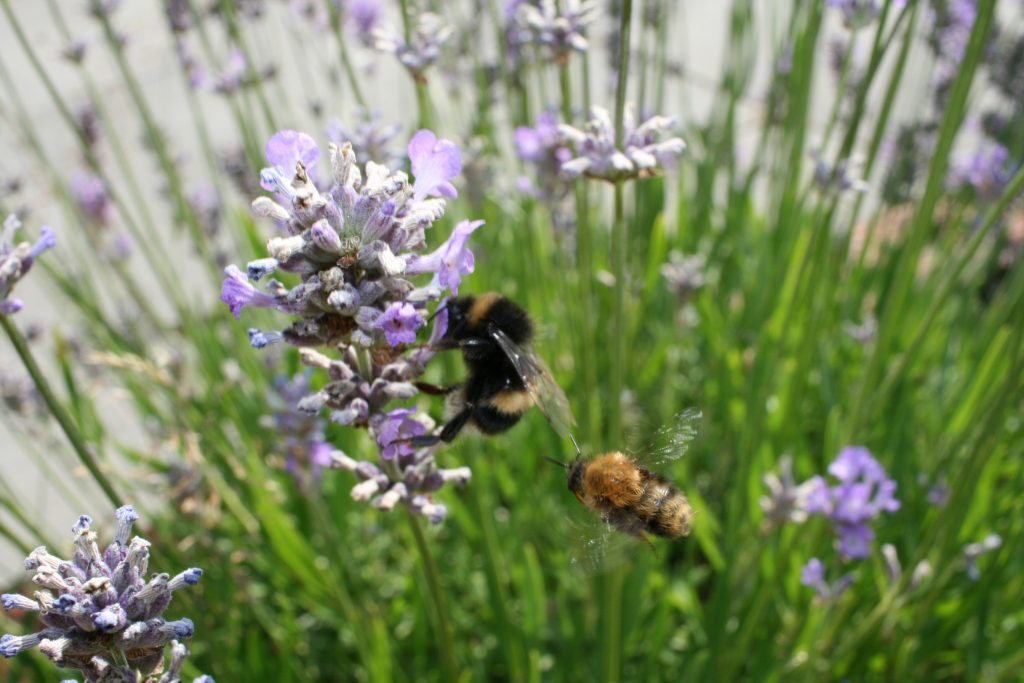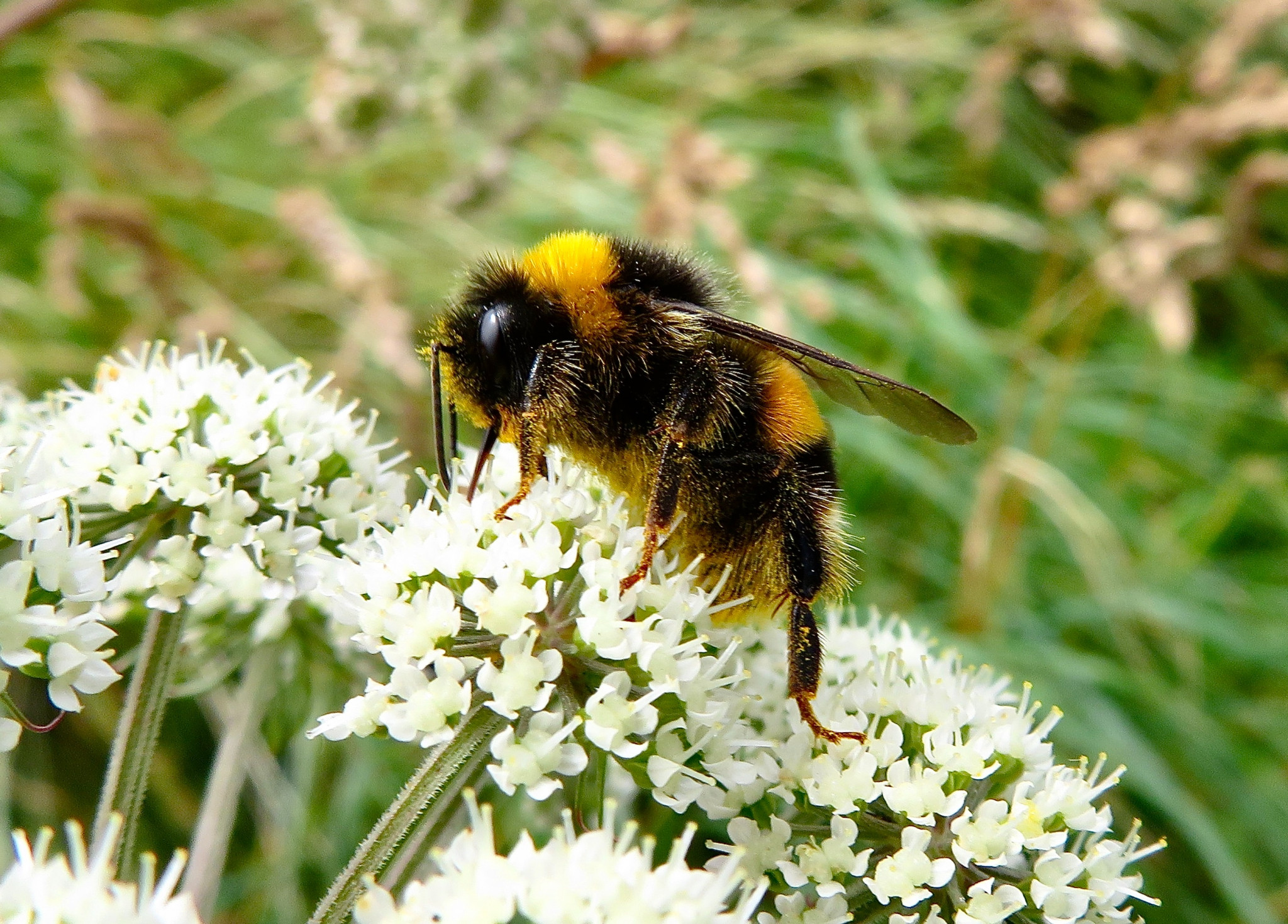There’s a lot of talk about bees being important, especially around spring and summer time when the bees’ presence are felt a lot more. But do you know why they are so important? Read this blog post so you can learn what it is they do and how you can help them!
So why are bees so important?
- They are essential pollinators. This means that they move the pollen from the ‘male anther of a flower to the female stigma of a flower’ which allows the flowers to reproduce. Bees use this process to pollinate a multitude of flowers, fruits and vegetables. These pollinators are sometimes referred to as the ‘lungs of the earth’ as they help the plants to thrive and grow effectively, especially helping the plants that provide us with the air we breathe in.
- They help create different medicines. Bees and the products they produce have been found to have antioxidant and antimicrobial properties while also being used as an herbal remedy for many different illnesses/ ailments.
- Bees can help to prevent soil erosion. The bees can help to do this by pollinating the plants and increasing plant growth and diversity, both of which can prevent soil erosion.
- They save the farming industry millions of pounds each year. Bees pollinate crops on a far larger scale than farmers could, even with mechanical pollination. Without the bees, UK farmers would be spending 1.8 billion pounds a year to do that job worse than the bees do naturally, for free.

But what’s happening to the bees?
On a global scale, bees are coming under threat for numerous reasons, most of which are human caused.
Habitat Loss
Bees have many habitats in nature, from trees to wildflower meadows. As farming and urbanization increases, as well as deforestation, these habitats are lost in the process. Bee survival is threatened when they have less places to store or collect food or protect themselves from harsh weather and predators.
Climate Change
The climate crisis is something that is spoken about more with the effects of it on humanity, but it also hugely affects seasonal timings for pollinators. Due to the extreme changes in weather, crops that need to be pollinated are growing earlier or later than expected, thus making the seasonal sequence out of sync.
Increasing Use of Pesticides
Typically, in non-organic farming (farming which uses chemicals to boost the produce for consumption) pesticides are used to kill any pests that could damage their plants/crops. But these pesticides also affect the bees, and the chemicals can become harmful when the bees are exposed to them.
So, how can people help the bees?
1. Build a Bee Hotel
Here are some sources that show different methods to create a bee hotel (with different styles depending on the resources available to the maker)
- How to build a bee hotel – Woodland Trust
- Make a Bee Hotel – BBC Gardeners World Magazine
- Build a bee hotel | Friends of the Earth
Alternatively, you can purchase one already made. Ensure that if you do so, there is a solid back to it so the tubes don’t form a wind tunnel, and that the tubes can be removed. Bee hotels need their tubes cleaned thoroughly or replaced every two years to stop bacteria from growing and endangering the bees residing there.
Why build a bee hotel?
Bee hotels are beneficial for solitary bees, as they ensure that they have a safe space to lay their eggs. Whilst honeybees and bumblebees can lay their eggs and work alongside their colonies, solitary bees build nests alone. This means that the bee hotels give them the safe space to lay their eggs that are protected, and as solitary bees make up the majority of the bee population in the UK, this is an especially important activity to get involved with.
Where should you place the bee hotel?
While the bee hotel will be a beneficial fixture to the bees wherever, there are some guidelines that could help the bees more such as
- Placing the bee hotel facing the south so it can be in direct sunlight
- Placing the bee hotel high off the ground
- Ensuring that it can be dry at all times so it’s the perfect habitat for bees to place their eggs in
- Ensuring that the materials are replaced every other year so that the bee hotel entices more bees each season.
2. Growing Bee-Friendly Flowers
While there are many sources that recommend different types of flowers the most common ones that I have found are
- English Lavender
- Bluebeard
These two flowers are recommended because the bees can see the colour purple the clearest, so they are able to identify these flowers the best.
Single Dahlias are good flowers for the bees to pollinate due to the struggle with double flowers due to their intricacy.
Alongside this, it is recommended that the flowers are planted with seedball mixes. Using seedballs ensure that the seeds inside will be protected from birds and other animals that may try to displace or eat the seeds. The seedball mixes will ensure that the wildflowers that are being planted grow well and attract the bees.

3. Help a Hurt Bee
It can be tricky to establish if a bee needs help, because sometimes the bee may be resting or taking refuge in your house, but there are some signs to spot.
Typically, a bee is struggling if it is:
- Laying on its back
- Found in an unusual spot (usually this is when the bee is inside and sheltering despite warm and sunny conditions outside)
- Wet
- Unable to fly
There are a number of ways to help a bee that is presumed to be injured or sick:
- The primary one is to move the bee to a place that is safe, such as a nearby pollinating flower or some foliage, this will ensure that the bee is safe and sheltered from harm if it is resting.
- Make a ‘energy solution’ for the bee, this is an easy thing to do with things that are typically in people’s kitchens, the solution is made up of two parts: water and sugar, the RSPB recommends a mixture of one part water and two parts sugar on to a spoon next to the bee. This gives the bee the chance to restore its energy before embarking on its journey.
- Place it inside, so that it is safe to recuperate, especially when in harsh weather conditions. This time inside will ensure the bee is safe but once the weather is assessed to be nicer and the bee is looking better, release the bee to the wild by placing it on nearby foliage.
Further Reading
How to Attract Bees to Your Garden
How to help revive a cold or wet bee
Honey and Health: A Review of Recent Clinical Research
Exhausted bee population ‘to be given energy drinks to boost performance’
By Amber Tydeman, SGO Projects Officer #livingwell
 Sustainability
Sustainability Bethany Climpson
Bethany Climpson 1507
1507


